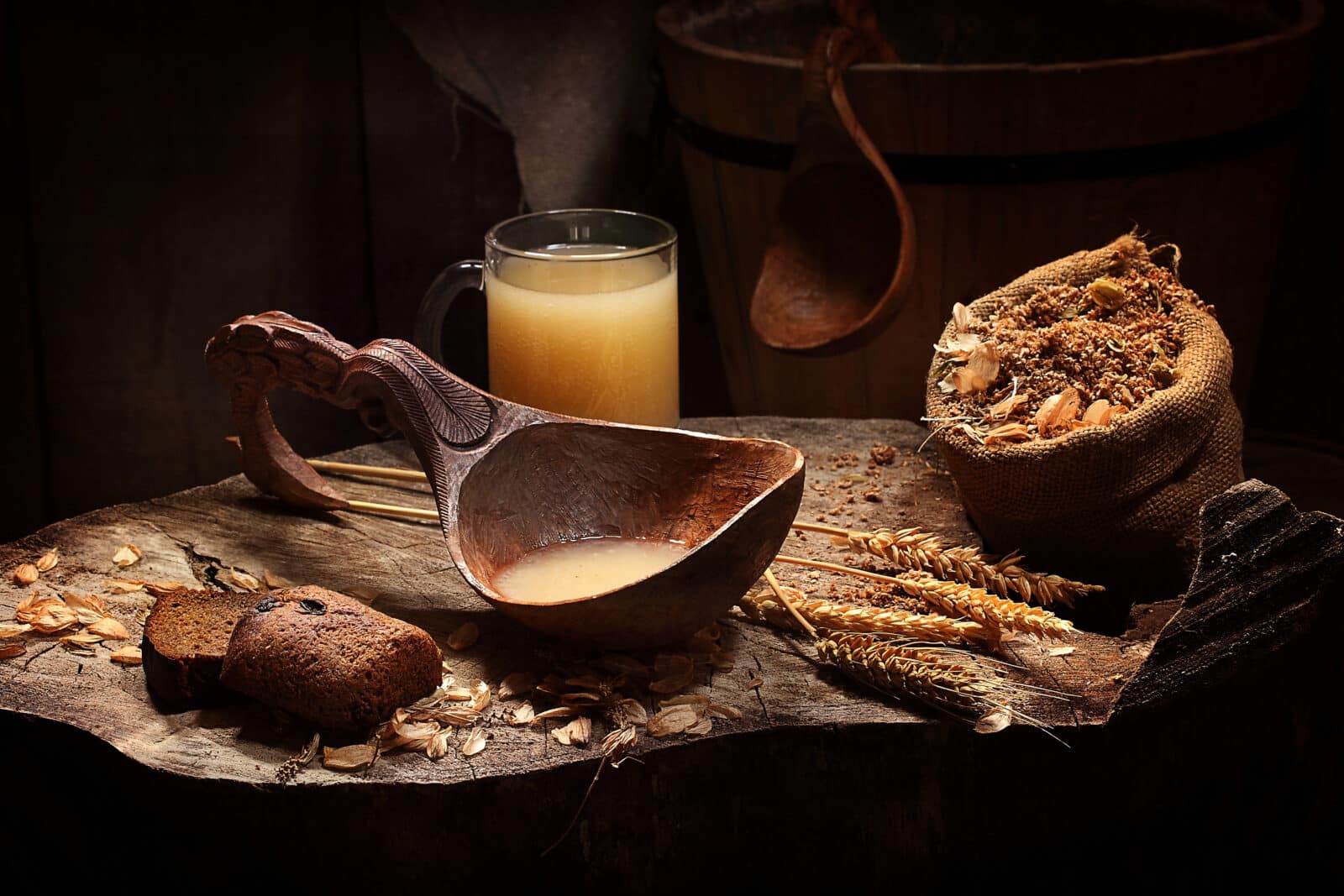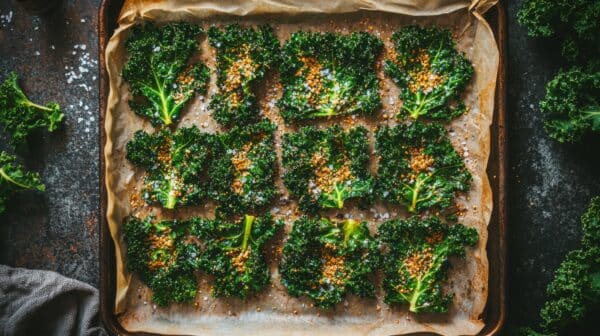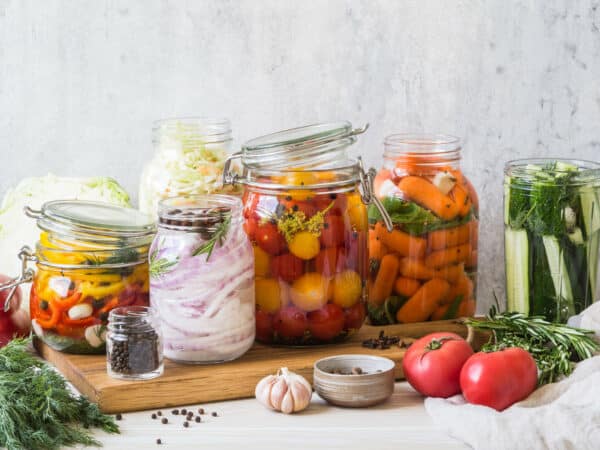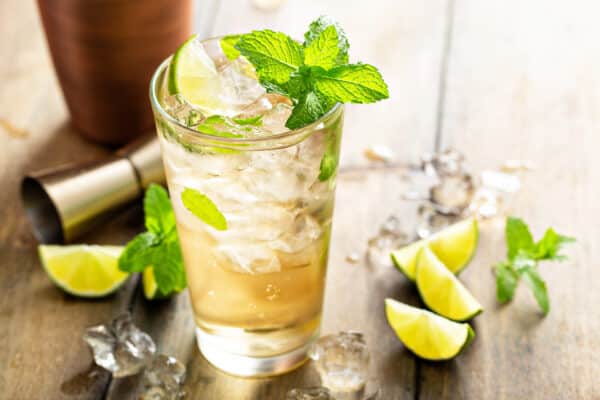Fermented drinks’ key ingredient is microorganisms
We have to thank our ancestors for their bravery as surely a less brave individual would not have attempted to drink semi-spoiled milk (Kefir), rotten tea (Pu-erh), or a strange mushroom drink (Kombucha).
Over the centuries humans have learned to not only enjoy these drinks but harness this wonderful process of fermentation as a means of preserving drinks for times of hardship or long voyages when water may be scarce or other drinks would spoil.
To make a drink fermented you require very specific assistance from something, you cannot even see called microbes.
The natural process of fermentation, which can change several types of raw foods, is carried out by microbes’ enzymes. Most frequently, in the absence of oxygen, microorganisms like bacteria or fungus (yeast) begin fermentation, turning carbohydrates like starch and sugar into alcohol and acids. Microorganisms transform carbohydrates into a range of metabolic byproducts throughout the fermentation process. These ingredients give fermented drinks their characteristic flavor, texture, and capacity to keep for a longer period. One of the most common types of fermentation uses yeasts as the main microorganism to begin this special process.
To learn more about yeast and the process of fermentation in fermented drinks
Nearly anywhere you go in the world you will find different unique fermented drinks, unique to each culture and each people.
While everyone now knows about Kombucha and Kefir, we have selected a few of our favorite more unusual non-alcoholic fermented drinks to share with you!
Kvass the fermented drink of the Cossacks
In many countries where bread is eaten as a staple food, there is some type of use once the bread has become stale. In some cultures, they turn the stale bread into breadcrumbs or bread pudding, while in others they make it into a salad like Panzanella.
In Eastern Europe, the Baltics, and the Asian steppe region they have a tradition of using their stale bread, usually rye bread, to make a delightful bubbly probiotic beverage known as Kvass.
Kvass is usually nonalcoholic; however, it can have an alcohol content of between 0.5 and 1% depending on how long it is left to ferment.
Kvass ferments because of the yeast in the sourdough and the predominant fermentable sugars come from the bread itself.
Ingredients
- 512-768 grams of stale bread cubed and lightly toasted
- 1420 ml of water
- 150 g of brown sugar
- 2-3 tablespoons of sourdough starter or white flour starter (in absence of sourdough: a few spoonfuls of yogurt and a teeny tiny pinch of commercial yeast)
- 1 teaspoon of seasoning (caraway seeds, coriander, raisins) (optional).
Equipment
- 2-liter jar which has been sterilized
- Clip-top bottles which have been sterilized.
Instructions
- Chop the bread and lightly toast it until it has a golden toasted color.
- Add the sugar and any seasonings (optional) into the water and bring it to a boil. Stir the liquid so that the sugar dissolves. Once boiling, continue to boil for 5 min and then turn off the heat and let it cool until it is warm.
- Place the toasted bread and sourdough starter into your 2 L mason jar.
- Pour the water and sugar mix into the jar leaving a couple of centimeters at the top. Additional water can be added if you do not have enough mixture.
- Put a lid on the jar and let it ferment at room temperature out of direct sunlight for 2-7 days.
- When the Kvass is to your taste, strain the contents and transfer the liquid to smaller jars or flip-top bottles, and put them in the refrigerator. Once in the refrigerator, the Kvass will last for 4-5 days.
Tepache is the fermented drink of the Aztec Gods
Tepache is a traditional fermented drink from Mexico. Tepache makes use of the wild yeasts growing on the pineapple skin and the sugars from the pineapple itself to make this exquisite refreshing drink.
Ingredients
- 1 pineapple peeled and cored
- 1.2 liters of water
- 125 g unrefined brown sugar
- 1 cinnamon stick
- ½ tbsp whole cloves
- ½ tbsp whole peppercorns
- 1 chili crushed or split down the middle.
Equipment
- 1.5-liter jar which has been sterilized
- Clip-top bottles which have been sterilized.
Instructions
- Bring 250 ml of water to a boil
- Add the sugar and stir until dissolved
- Add 1 liter of cold water and let the whole mixture cool to room temperature
- Cut the pineapple skin off the pineapple and cut the core into large pieces. The flesh can be used for another purpose.
- Prepare the chili
- Add the pineapple peel and core, the chili, and spices to the jar.
- Add the warm water to the jar pouring it over the other ingredients, but make sure to leave at least a 2cm gap from the top.
- Put the lid on the jar and leave it to sit at room temperature out of direct sunlight for 3 days.
- Strain the liquid discarding the pineapple peel and core as well as the rest of the spices and chili.
- Transfer the strained liquid to bottles or smaller jars to sit at room temperature for 1 more day.
- After opening all the bottles to release any built-up CO2 before transferring it to the fridge.
- Serve chilled!
- The Tepache will last roughly 2 weeks in the fridge, however, make sure to release the CO2 every few days to prevent any accidents.
Important note: Try to use an organic pineapple and do not wash it or just lightly rinse it so that it retains all of the natural yeasts needed to facilitate the fermentation process.
Turkish Boza the perfect fermented winter drink
Turkish Boza is considered the ideal drink to warm and bolster one’s body in cold weather and therefore was the top choice of Ottoman soldiers in the past. Turkish Boza is a thick smoothie-like fermented drink made from bulgur, rice, sugar, yeast, and water.
Ingredients
- 500 g bulger
- 100 g rice
- 3.5 L water
- ½ teaspoon instant yeast
- 1 tablespoon sugar
- 200 g sugar
- Cinnamon.
Instructions
- Fill a pot with the water and bring it to a boil.
- Wash the bulgur and rice and add them to the boiling water.
- Cook thoroughly until all ingredients are mushy.
- Strain through a fine strainer and press to get out any remaining liquid. Discard everything except the strained liquid.
- Let the liquid sit uncovered for 2 hours out of direct sunlight.
- Mix 1 tablespoon of sugar and ½ teaspoon of instant yeast into a cup of water.
- Add the mixture into the pot and cover it with a lid.
- Let the mixture sit for 1 day in a cool place. You can stir it occasionally.
- Add the remaining sugar and refrigerate.
- For serving pour it into a glass and lightly garnish with cinnamon.
Now you can try your hand at making these three wonderful nonalcoholic fermented drinks made through the magic of fermentation and yeast!




